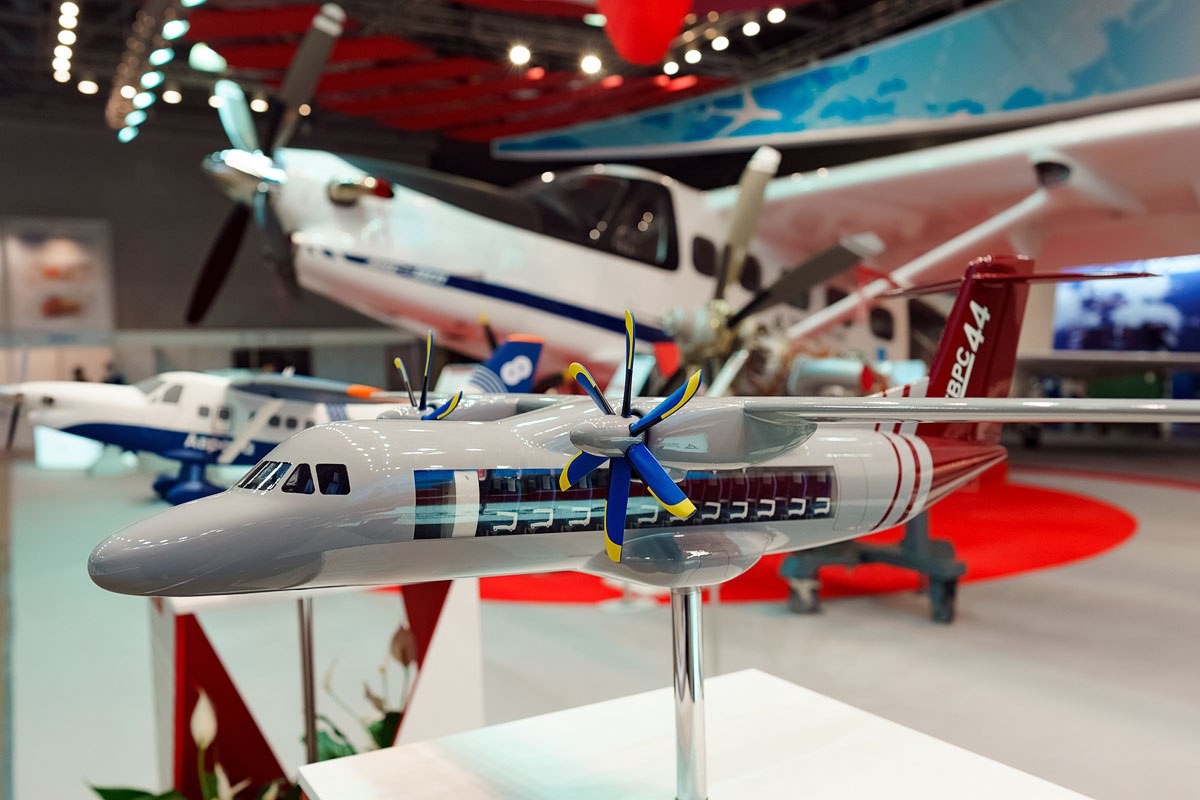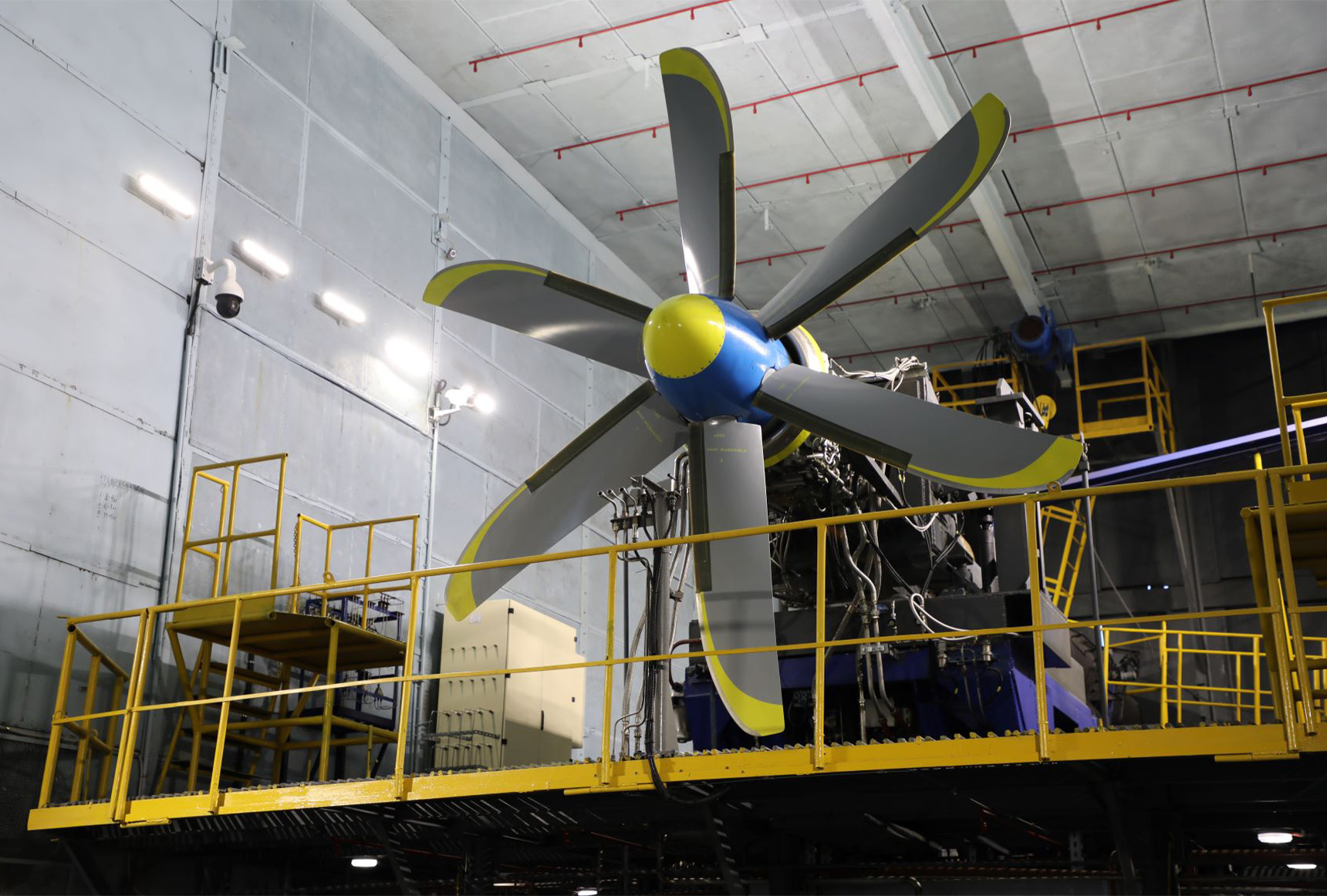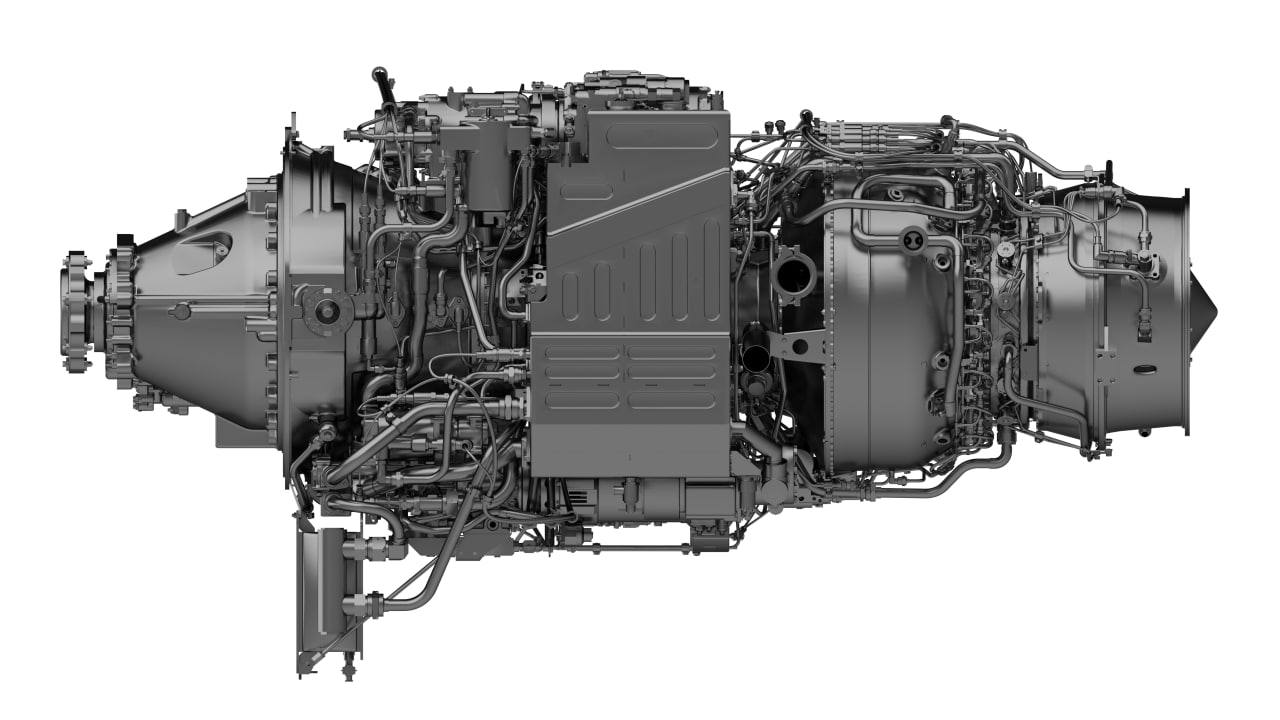
Photo: Ural Works of Civil Aviation
In a famous Soviet "Aviators March", aircraft engine is compared with a heart. Actually, it is difficult to talk about complete import substitution in aircraft engineering without launching the production of domestically-built engines. Reliance on the restricted import engine will, in fact, prevent the most cutting-edge development from “taking off”. Today we are going to describe a propulsion for the Ladoga. The aircraft for 44 passengers is being developed by Ural Works of Civil Aviation (UWCA). The engine for the novelty product consisting entirely of Russian-made components is being built by St.Petersburg-based UEC-Klimov (part of Rostec’s United Engine Corporation).
Aviation workhorses
TVRS-44 Ladoga aircraft (regional turbopropeller aircraft for 44 passengers) is meant to replace Yak-40 and An-20 passenger airplanes and An-26-100 passenger and cargo airplanes, i.e. regional and local airline aircraft. In out country with its huge distances and remote hard-to-reach areas, the need for a wide fleet of such aircraft cannot be overestimated. For example, during the Soviet period, the An-24 – developed as early as in the 1950s – accounted for up to one third of passenger carrying operations in the country, and the Yak-40 proved itself to be so good for the Soviet airlines that it generated the interest among European airlines. The aircraft was the first Soviet plane that got certificates of airworthiness in foreign countries – in Italy and West Germany. In the 1970s, there were also mutual initiatives for Yak-40 procurement by US airlines, but politics interfered with these plans.
 TVRS-44 Ladoga cabin mockup. Photo: Ural Works of Civil Aviation
TVRS-44 Ladoga cabin mockup. Photo: Ural Works of Civil Aviation
The Ladoga has unique aerodynamic configuration and design, 100% new airframe, landing gear, systems and equipment comprised of solely domestically-produced components. The new aircraft required a new propulsion.
A new engine for the new project
It was decided to provide its own propulsion for the Ladoga from the very beginning. In 2021, UEC-Klimov in St.Petersburg received a work order for fabrication of TV7-117ST-02 engine for TVRS-44 Ladoga regional turbopropeller aircraft.

ТВ7-117СТ-01. Photo: United Engine Corporation
Commercial production of these engines is to be started in 2025. This year, UEC-Klimov will fabricate four engine prototypes, two of them will be ready as early as in summer. Another two engines to be installed on the first full-scale development aircraft will be produced before the end of the year.
TV7-117ST-02 takeoff power will be 2400 hp with automatic augmentation up to 2600 hp if one engine fails, and the fuel consumption rate will be the best in class. As opposed to the base engine, the propulsion for the Ladoga will get a closed-loop oil system with oil cooler mounted directly on the engine in order to avoid oil drain during engine replacement. In addition, the oil tank capacity will be increased to ensure continuous engine operation – 16 hours instead of 12. The engine will also have a new higher-speed AC generator and thereby the engine weight will be reduced.
 ТВ7-117СТ-02. Photo: United Engine Corporation
ТВ7-117СТ-02. Photo: United Engine Corporation
Due to the lack of ground-based air starting systems at northern and Trans-Urals airports, the engine has an electric starting system with an advanced starter-generator instead of the air starting system. External piping and components of the automatic adjustment and control unit (AACU) will be also upgraded. Engine mounts will be suitable for suspension on the TVRS-44.
According to UEC-Klimov’s representatives, extensive work on the engine is underway. It is apparent that regional aircraft that can fly in the Far East, Far North, Siberia and other remote regions, have been also highly demanded before and the current context makes this issue even more essential.

